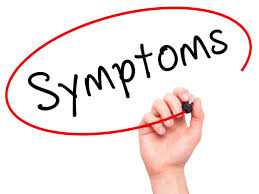 As we all know, the totality of a case remains the basis for repertorisation and serves the purpose to find out the most similar homeopathic medicine of the materia medica. Based on different concepts of the ‘Totality of Symptoms’, we see three major influences in the art of repertorisation namely Boenninghausen, Kent and Boger. Each of them emphasized different aspects to form the totality of a case.
As we all know, the totality of a case remains the basis for repertorisation and serves the purpose to find out the most similar homeopathic medicine of the materia medica. Based on different concepts of the ‘Totality of Symptoms’, we see three major influences in the art of repertorisation namely Boenninghausen, Kent and Boger. Each of them emphasized different aspects to form the totality of a case.
Boenninghausen advocated the necessity of four elements for constituting a complete symptom – calling it a ‘Grand Symptom’ – the symptom of the patient. He was convinced that these four parts of a ‘symptom’ was the only method of getting the totality of the case.
According to the doctrine of complete symptom, each ‘grand’ or complete symptom should consist of the following components:
– Location
– Sensation
– Modalities
– Concomitants
Based on Boenninghausen’s doctrine of complete symptom, I am going to highlight that one complete symptom is enough for repertorisation from ‘Therapeutic Pocket Book’ avoiding the heaps of rubrics in your repertorisation sheet for an acute case, and this is true for any chronic condition even.
Mrs. Bn. 34 years, came to clinic, having pressing pain in abdomen with irritable feelings. She also had shifting pains in knee and ankle joints of limbs which were usually worse from motion.
| Location | Sensation | Modality | Concomitant | |
| 1. | Abdomen | Pain | – | Irritability |
| 2. | Joints | Pain | < motion | – |
Now, we have three scenarios to repertorise this case from ‘TPB’.
Scenario 1: Complete the first symptom considering modality from other location (analogy – completing a missing attribute)
| Location | Sensation | Modality | Concomitant | |
| 1. | Abdomen | Pain | (< motion ) | Irritability |
Scenario 2: Complete the second symptom considering concomitant associated with the first symptom (generalisation – using a general concomitant)
| Location | Sensation | Modality | Concomitant | |
| 2. | Joints | Pain | < motion | ( Irritability ) |
Scenario 3: Take all fragments of symptoms to repertorise
Repertorisation Analysis:
Scenario 1
Nux-v 16/4, Puls 15/4, Bry 14/4, Phos 14/4
Scenario 2
Puls 16/4, Led 15/4, Sulph 13/4, Bry 12/4
Scenario 3
Puls 23/4, Suph 21/4, Bry 20/4, Nux-v 20/4
In this analysis, I noticed nearly similar group of medicines all these subsets, and knowing the patient, I prescribed Puls. 200.
I believe, presenting this small case with different repertorisation from Boenninghausen’s Therapeutic PocketBook would help to understand the importance of the ‘complete symptom’, and this ‘one complete symptom’ approach would save time and efforts in your busy homeopathic practice.





